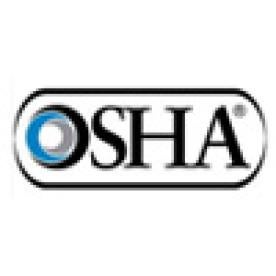At a recent American Bar Association meeting, Tom Galassi, Director of Enforcement Programs for OSHA, stressed the agency’s continued focus on key enforcement initiatives, such as temporary workers, corporate-wide settlement agreements and the continued use of the severe violator enhancement program (“SVEP”).
Inspection Statistics
Mr. Galassi discussed inspection statistics and noted that OSHA has committed to conducting more industrial hygiene/health inspections in fiscal year 2015. In FY 2014 81% of the inspections conducted were safety related in comparison to the 19% health inspections. Year to date for FY 2015 79% of inspections were safety focused and 21% were health focused. It seems the agency would like to balance out the proportion of inspections.
Mr. Galassi discussed that the overall number of inspections for FY 2014 are down; however, this is likely due to the government shutdown for three weeks in 2014. Mr. Galassi stated that he believes without the shutdown the total inspections conducted would have been on par with previous years, which are roughly 40,000 inspections a year.
For FY 2014, 26% of the inspections conducted were in full compliance with applicable OSHA standards, meaning no citations issued to 26% of the employers who were inspected in 2014. OSHA has seen a steady increase in this rate since FY 2010.
Mr. Galassi discussed that the number of complaint inspections are up. There was a 3% increase in the number of complaint inspections between FY 2013 and FY 2014 with most of these inspections being in General Industry. Interestingly, there has been a downward trend in number of complaint inspections in the construction industry.
Mr. Galassi also discussed the top ten OSHA citations for FY 2014. Over the last several years this top ten list continues to remain consistent. The top four categories of hazards include: falls, struck by, amputations, and electrical. The top ten OSHA citations for FY 2014 are:
-
Fall Protection
-
Hazard Communication
-
Scaffolding
-
Respiratory Protection
-
Powered Industrial Trucks
-
Lockout/Tagout
-
Ladders
-
Electrical, Wiring Methods
-
Machine Guarding
-
Electrical, General Requirements
Severe Violator Enhancement Program (“SVEP”)
OSHA continues to utilize the Severe Violator Enhancement Program (“SVEP”) as a key enforcement initiative. According to Mr. Galassi, on February 11, 2015, oil and gas hazards were incorporated into SVEP high-emphasis hazards. The agency’s intention is to include upstream oil and gas hazards such as those in production services, drilling and well servicing, including fracking. However, Mr. Galassi did not identify the specific hazards that would be part of the high-emphasis hazards under SVEP. Mr. Galassi noted that the SVEP compliance directive will be updated to include upstream Oil & Gas industry NAICS 211111, 213111 and 213112 — Oil and Gas Production Services, Drilling and Well Servicing/Upstream Oil and Gas Industry. Although Mr. Galassi noted these changes took place February 11, 2015, we were unable to locate any new enforcement guidance on OSHA’s website pertaining to SVEP.
Since the implementation of SVEP, there have been 474 SVEP cases. Of the 474, the majority of cases are related to citations of high-emphasis hazards as outlined in the SVEP Directive, with only 2% relating to Process Safety Management. According to OSHA, approximately 60% of the SVEP cases to date are in construction. Roughly 25% of the 474 total cases are fatalities.
New Reporting Requirements
Mr. Galassi discussed recent data from the new reporting requirements which were implemented January 1, 2015. Mr. Galassi stated that OSHA intends to conduct on-site inspections for all fatalities reported as well as any incident involving the hospitalization of two or more employees. To date, 2400 reports were made under the new reporting requirements. Of the 2400 reports, in 35% of those OSHA conducted an on-site inspection. A small percentage of reports either were not work-related or not covered by the new reporting requirements. The remaining 45% OSHA utilized its “Rapid Response Investigation” and sent employers letters requesting information about the employer’s investigation into the incident, its root cause analysis and corrective action.




 />i
/>i


